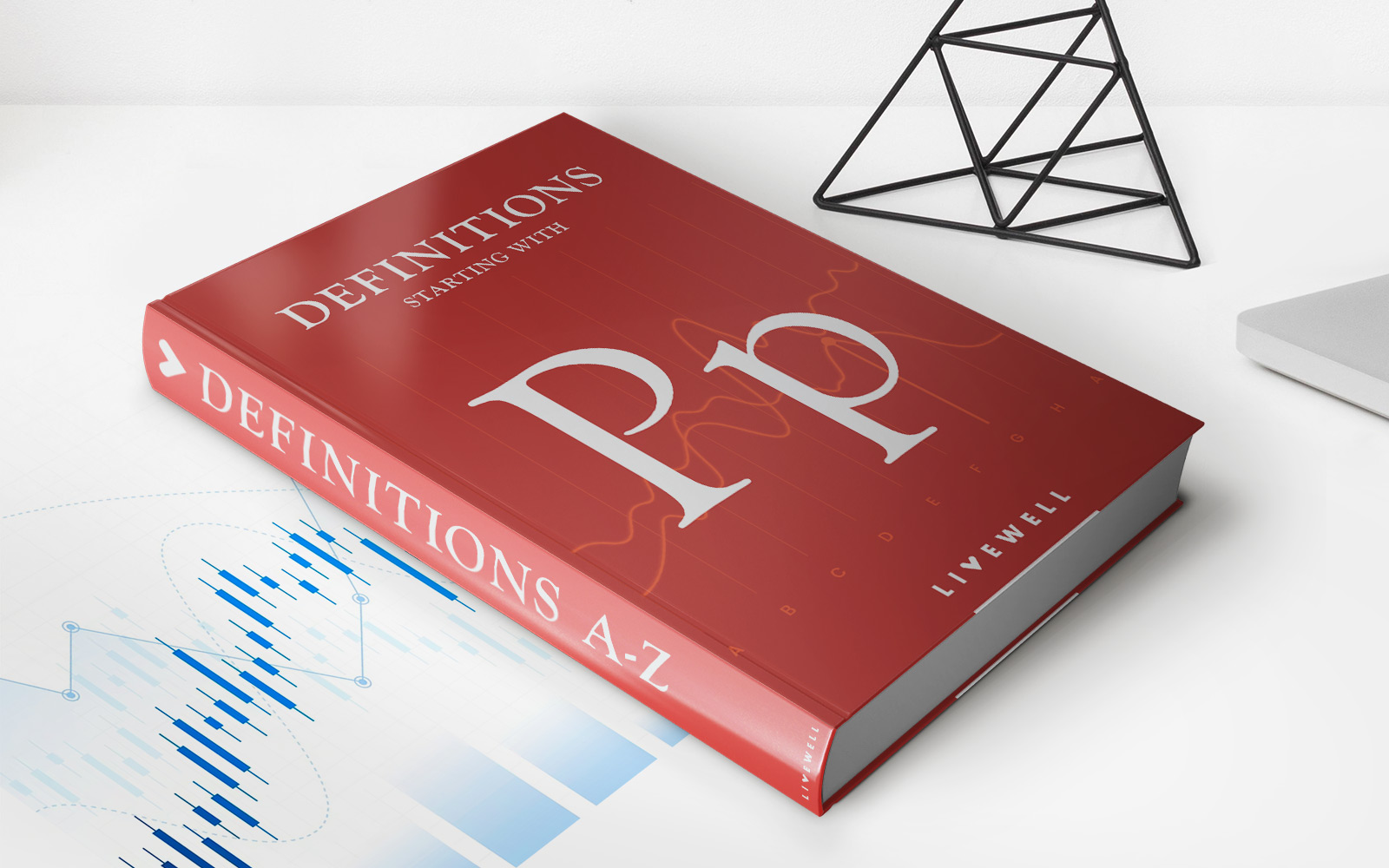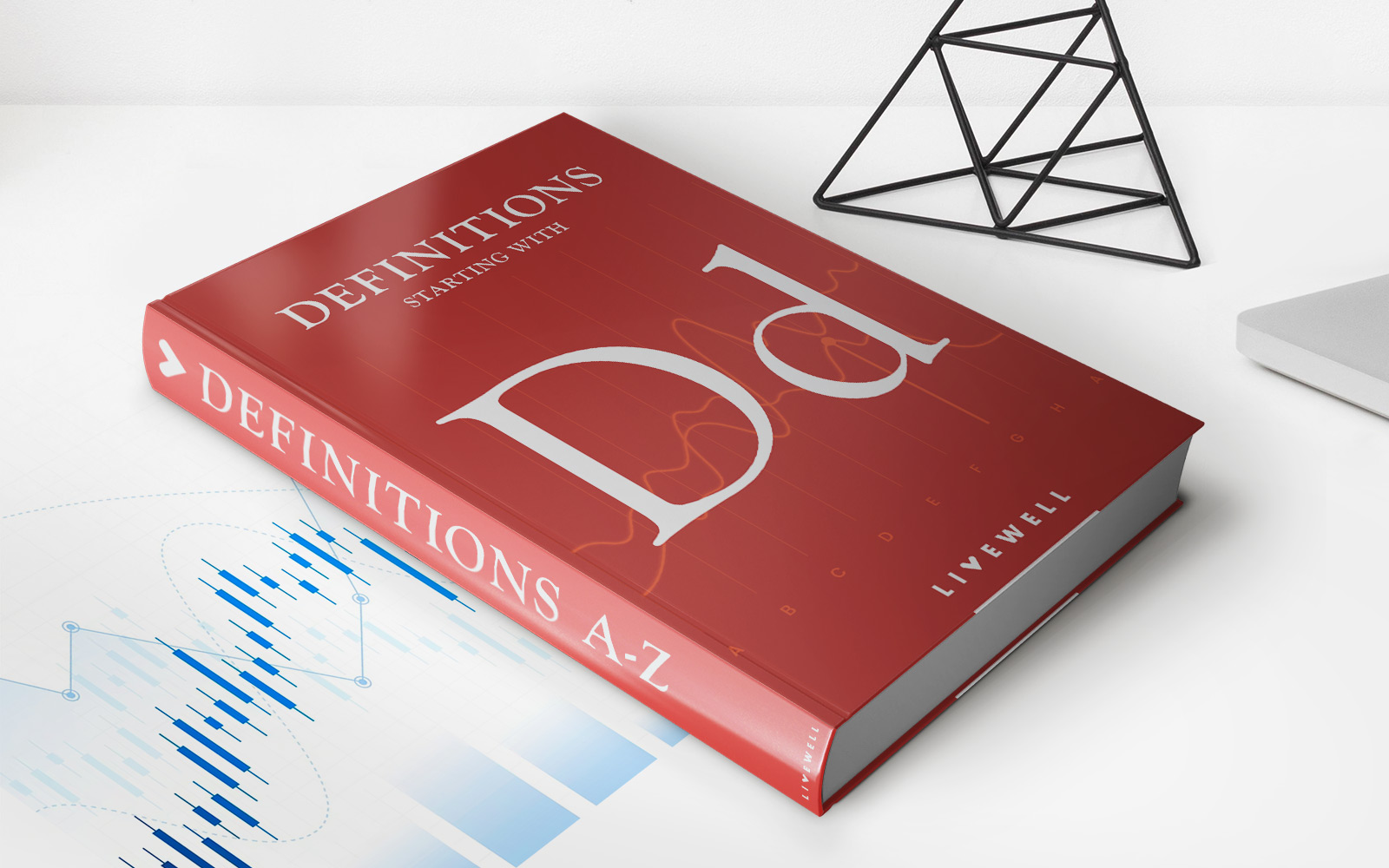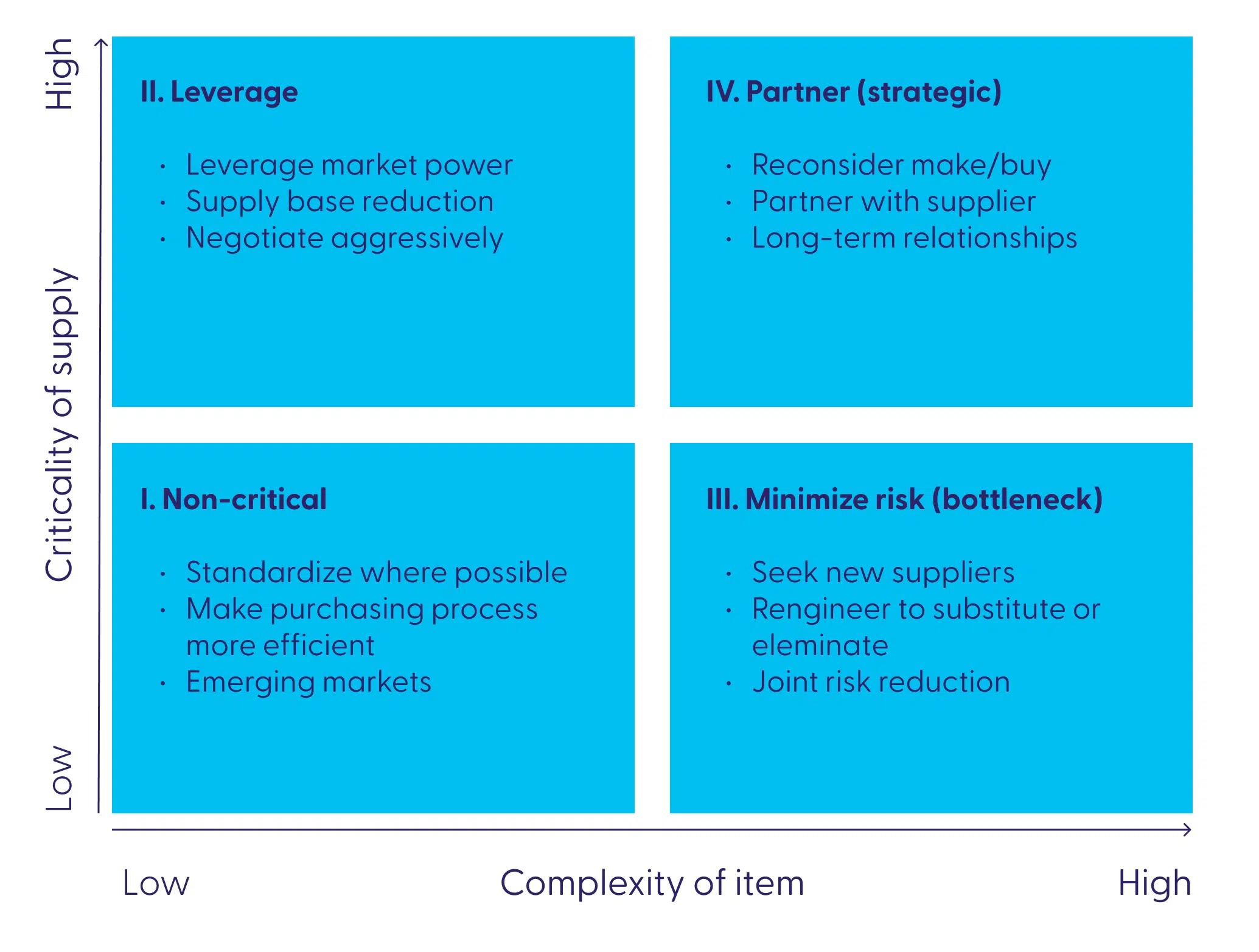

Finance
What Is Credit For Other Dependents
Published: January 13, 2024
Learn how credit for other dependents can impact your finances and tax return. Understand the eligibility criteria and how to claim this valuable credit.
(Many of the links in this article redirect to a specific reviewed product. Your purchase of these products through affiliate links helps to generate commission for LiveWell, at no extra cost. Learn more)
Table of Contents
- Introduction
- Definition of Credit for Other Dependents
- Qualifying Criteria for Credit for Other Dependents
- Maximum Credit Amount for Other Dependents
- How to Claim Credit for Other Dependents
- Examples of Eligible Dependents for the Credit for Other Dependents
- Limitations and Exceptions for Credit for Other Dependents
- Conclusion
Introduction
When it comes to personal finance, understanding the various credits and deductions available to you can make a significant difference in your overall tax liability. One such credit that you may be eligible for is the credit for other dependents.
The credit for other dependents is a tax credit designed to provide financial relief for individuals who have dependents that may not meet the requirements for the traditional child tax credit or the dependent care credit. It is intended to recognize the additional expenses and financial responsibilities that come with caring for dependents who do not qualify for these other credits.
It is important to note that the credit for other dependents is separate and distinct from the child tax credit, which provides a credit for qualified children under the age of 17. The credit for other dependents is available for individuals who have dependents who do not meet the criteria for the child tax credit but still rely on them for financial support.
Now that we have a general understanding of the credit for other dependents, let’s explore the qualifying criteria, maximum credit amount, how to claim it, and some examples of eligible dependents.
Definition of Credit for Other Dependents
The credit for other dependents, also known as the “Family Credit,” is a tax credit provided by the Internal Revenue Service (IRS) to taxpayers who have dependents that may not meet the criteria for the child tax credit. It allows taxpayers to receive a credit for each eligible dependent, reducing their overall tax liability.
Unlike the child tax credit, which applies to children under the age of 17, the credit for other dependents expands the scope of eligible dependents to include older children, relatives, and other individuals who rely on the taxpayer for financial support.
Under the credit for other dependents, a dependent can be anyone who meets the following requirements:
- Qualifying Relative: The dependent must meet the criteria of a qualifying relative as defined by the IRS. This includes being a relative, such as a child, stepchild, sibling, parent, or grandparent; living with the taxpayer for the entire year (with some exceptions); and having a gross income below the annual threshold.
- Financial Support: The taxpayer must provide more than half of the support for the dependent’s living expenses, including food, shelter, clothing, and medical care.
- Citizenship or Residency: The dependent must be a U.S. citizen, a U.S. national, or a resident alien.
It is important to note that to claim the credit for other dependents, the taxpayer must also have a valid Social Security number or an Individual Taxpayer Identification Number (ITIN) for each dependent listed on their tax return.
The credit for other dependents can be a valuable tax break for individuals who are financially supporting dependents who do not meet the criteria for the child tax credit. It provides an opportunity to offset some of the costs associated with caring for these dependents and can help alleviate the financial burden on the taxpayer.
Qualifying Criteria for Credit for Other Dependents
In order to claim the credit for other dependents on your tax return, there are specific criteria that must be met. These criteria help determine whether an individual qualifies as a dependent for the purposes of the credit. Let’s take a closer look at the qualifying criteria:
- Relationship: The dependent must be a qualifying relative. This includes children, stepchildren, siblings, parents, grandparents, or any other blood relative. It’s important to note that the dependent does not necessarily have to live with you, as long as they meet the other criteria.
- Support: As the taxpayer, you must provide more than half of the dependent’s total support during the tax year. This includes financial support for basic needs such as housing, food, clothing, education, and medical expenses. Keep in mind that support from government assistance programs or scholarships received by the dependent are not counted as support provided by the taxpayer.
- Income: The dependent’s gross income must be under a certain threshold set by the IRS. For the tax year 2021, the income limit is $4,300. If the dependent’s income exceeds this limit, they may not be eligible to be claimed for the credit for other dependents.
- Citizenship or Residency: The dependent must be a U.S. citizen, U.S. national, or a resident alien of the United States. Non-resident aliens cannot be claimed as dependents for the credit.
- Age: Unlike the child tax credit, there is no age restriction for the credit for other dependents. This means that you can claim the credit for dependents of any age as long as they meet the other qualifying criteria.
It is important to thoroughly review the IRS guidelines to ensure that you meet all the qualifying criteria for the credit for other dependents. Keeping accurate records and documentation of support provided to the dependent can help substantiate your claim if needed.
Next, let’s explore the maximum credit amount for other dependents and how to claim the credit on your tax return.
Maximum Credit Amount for Other Dependents
The maximum credit amount for the credit for other dependents is $500 per eligible dependent for the tax year. This means that for each qualifying dependent you claim, you can receive a credit of up to $500, which will directly reduce your overall tax liability.
It’s important to note that the credit for other dependents is non-refundable, which means that it can only be used to offset your tax liability. If your tax liability is less than the total credit amount, you can only use the credit to reduce your liability to zero. Any remaining credit amount cannot be refunded to you.
For example, if you have three qualifying dependents and are eligible for the credit for other dependents, the total credit you can claim is $1,500 ($500 per dependent). If your tax liability for the year is $1,000, you can use the credit to reduce your liability to zero, but you will not receive the remaining $500 as a refund.
It’s important to remember that the credit for other dependents is separate and distinct from other tax credits you may be eligible for, such as the child tax credit or the dependent care credit. You can potentially claim multiple credits if you meet the criteria for each specific credit. Be sure to review the IRS guidelines and consult with a tax professional to understand how these different credits may apply to your individual tax situation.
To claim the credit for other dependents on your tax return, you will need to use Form 1040 or 1040-SR and include the necessary information for each eligible dependent. The credit will be calculated based on the number of qualifying dependents you claim and the maximum credit amount per dependent.
Now that we understand the maximum credit amount for other dependents, let’s explore how to claim the credit on your tax return.
How to Claim Credit for Other Dependents
To claim the credit for other dependents on your tax return, you will need to follow certain steps and provide the necessary information. Here’s how you can claim the credit:
- Eligibility and Documentation: First, make sure that you meet all the qualifying criteria for the credit for other dependents, as discussed earlier in this article. Gather the required documentation, such as Social Security numbers or Individual Taxpayer Identification Numbers (ITINs) for each dependent, and any supporting documents that validate your relationship and financial support for the dependents.
- Filing Status: Determine your filing status. The credit for other dependents can be claimed by individuals who file as Single, Head of Household, Married Filing Jointly, or Qualifying Widow(er) with Dependent Child.
- Complete the Tax Return: Use either Form 1040 or 1040-SR to file your tax return. Enter the required information about your dependents, including their names, Social Security numbers or ITINs, and relationship to you.
- Calculate the Credit: Use the appropriate worksheet provided in the tax form instructions to calculate the credit for other dependents. The maximum credit amount per eligible dependent is $500.
- Attach the Required Forms or Schedules: Depending on your specific situation, you may need to attach additional forms or schedules to your tax return. For example, if you have child and dependent care expenses, you may need to complete Form 2441 as well.
- Review and File: Once you have completed all the necessary sections and forms, review your tax return for accuracy and make sure you have included all the required information. Sign and date the return before mailing it to the IRS or submitting it electronically.
It is highly recommended to double-check your tax return and consult with a tax professional if you have any uncertainties or questions about claiming the credit for other dependents. They can provide personalized guidance based on your specific circumstances and ensure that you are maximizing your eligible credits and deductions.
By following these steps and providing accurate information, you can successfully claim the credit for other dependents on your tax return and potentially reduce your overall tax liability.
Next, let’s look at some examples of eligible dependents for the credit for other dependents.
Examples of Eligible Dependents for the Credit for Other Dependents
The credit for other dependents expands the range of eligible dependents beyond those covered by the child tax credit. Here are some examples of dependents who may qualify for the credit:
- Elderly Parents: If you are financially supporting your elderly parents who do not meet the criteria for the child tax credit, you may be able to claim the credit for other dependents for them. As long as they meet the qualifying criteria, such as being a qualifying relative and receiving more than half of their financial support from you, they can be considered eligible dependents.
- Adult Children: If you have adult children who are not considered qualifying children for the child tax credit due to their age, but you still provide more than half of their financial support, they may be eligible dependents for the credit for other dependents. This can include children over the age of 17, who may be attending college or have other circumstances that make them financially dependent on you.
- Non-Relative Dependents: The credit for other dependents also extends to non-relatives who meet the qualifying criteria. This can include close friends or other individuals who rely on you for financial support and meet the requirements of a qualifying relative, such as living with you for the entire year and being below the income threshold.
- Disabled Dependents: If you have dependents with disabilities who do not meet the criteria for the child tax credit, they may qualify for the credit for other dependents. This can include adult children or other individuals with disabilities whom you provide more than half of the financial support for and meet the other qualifying criteria as set by the IRS.
- Other Qualifying Relatives: In addition to the above examples, there are other qualifying relatives who may be eligible dependents for the credit for other dependents. This can include siblings, grandparents, or other blood relatives who meet the qualifying criteria and rely on you for financial support.
These examples demonstrate that the credit for other dependents is designed to provide tax relief for individuals who support dependents that may not fit into the traditional categories for tax credits. It recognizes the diverse range of family and financial situations and aims to provide financial support for those who shoulder the responsibility of caring for dependents.
It’s important to consult with a tax professional or refer to the IRS guidelines to determine the specific eligibility requirements and documentation needed for claiming the credit for other dependents based on your individual circumstances.
Lastly, let’s discuss some limitations and exceptions for the credit for other dependents.
Limitations and Exceptions for Credit for Other Dependents
While the credit for other dependents can provide valuable tax relief for individuals supporting non-qualifying children and other dependents, it is important to be aware of the limitations and exceptions associated with this credit. Here are some key points to consider:
- Non-Refundable Credit: The credit for other dependents is non-refundable, meaning it can only be used to reduce your tax liability to zero. If your tax liability is already zero or if the credit amount exceeds your tax liability, you will not receive a refund for the remaining credit.
- Income Threshold: The dependent’s gross income must be below a certain threshold to be eligible for the credit for other dependents. For the tax year 2021, the income limit is $4,300. If the dependent’s income exceeds this threshold, they may not qualify as an eligible dependent for this credit.
- Dependent Care Credit: The credit for other dependents cannot be claimed alongside the dependent care credit for the same dependent in the same tax year. If you qualify for both credits, you will need to determine which credit provides the greater tax benefit and choose to claim that particular credit.
- Marriage Status: If you are married, both you and your spouse must agree to either both claim the credit for other dependents or neither of you claim the credit. This rule applies unless you and your spouse are legally separated or living apart for the entire tax year.
- Non-Custodial Parent: If you are a non-custodial parent, you generally cannot claim the credit for other dependents unless the custodial parent signs a Form 8332, Release/Revocation of Release of Claim to Exemption for Child by Custodial Parent or copies of a divorce decree or separation agreement that grants you the ability to claim the credit.
It is essential to carefully review the IRS guidelines and consult with a tax professional to ensure that you meet all the necessary requirements and understand any exceptions or limitations that may apply to your specific situation. They can provide personalized advice and guidance to help you make the most out of the credit for other dependents while staying compliant with tax regulations.
Now that we have explored the limitations and exceptions for the credit for other dependents, let’s conclude our discussion.
Conclusion
The credit for other dependents is a valuable tax credit that provides financial relief for individuals who support dependents that may not meet the criteria for the child tax credit. It recognizes the diverse range of family and financial situations and aims to provide assistance to those who bear the financial responsibility of caring for dependents.
By understanding the qualifying criteria, maximum credit amount, and how to claim the credit, you can take advantage of this tax break and potentially reduce your overall tax liability. Remember to gather the necessary documentation and consult with a tax professional if you have any uncertainties or questions about claiming the credit.
While the credit for other dependents has its limitations and exceptions, such as being a non-refundable credit and having income thresholds, it is still a valuable tool that can help alleviate some of the financial burden of supporting dependents who do not qualify for other tax credits.
As you navigate the complexities of personal finance and tax planning, it’s crucial to stay informed about the various credits and deductions available to you. Being proactive and knowledgeable can make a significant difference in your overall tax situation.
Remember to consult with tax professionals, stay up-to-date on IRS guidelines, and keep accurate records for documentation purposes. With careful planning and understanding, you can optimize your taxes and ensure that you are maximizing your available tax credits and deductions.
Claiming the credit for other dependents is just one step in your financial journey. By staying informed, making sound financial decisions, and seeking professional advice when needed, you can navigate your way towards a more secure and prosperous financial future.














